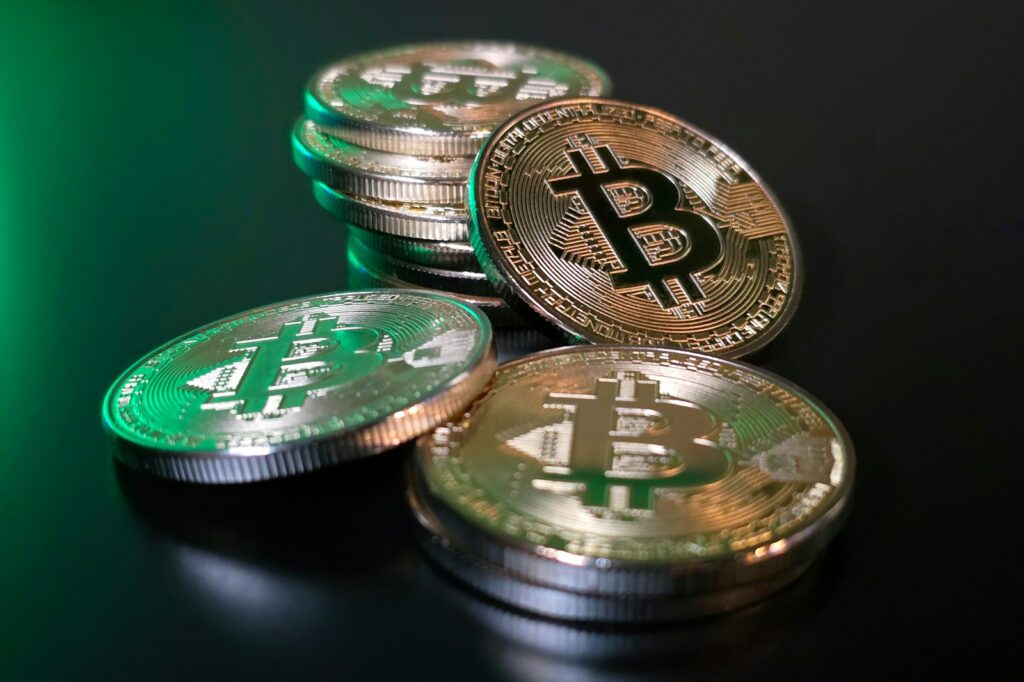Main Points :
- Bitcoin (BTC) has surged past $61,000, a three-week high.
- Ethereum (ETH) and XRP (XRP) also see gains, with ETH up by 2.3% and XRP rising by 0.4%.
- U.S. retail sales data and Trump’s announcement of a new crypto business have impacted the market.
- Technical indicators show a potential continuation of the upward trend.
- Key upcoming events include the U.S. Federal Open Market Committee (FOMC) meeting, which could further influence market movements.
Bitcoin’s Short-Term Performance and Market Sentiment
On September 18, 2024, Bitcoin (BTC) demonstrated a strong upward trend, reaching a high of over $61,000 for the first time in three weeks. This marked a significant rebound, with Bitcoin rising approximately 3.8% in the past 24 hours to $60,204 per BTC. The rise was not limited to Bitcoin; Ethereum (ETH) saw a 2.3% increase to around $2,339 per ETH, while XRP (XRP) experienced a smaller but notable 0.4% gain, trading at approximately $0.58.
This surge came after Bitcoin spent much of the previous day consolidating around $58,000. A combination of stronger-than-expected U.S. retail sales figures for August and renewed investor interest helped drive the rally, reflecting reduced concerns over a slowing U.S. economy. As the dollar strengthened, so did demand for cryptocurrencies, which saw a boost across the market.
Influence of U.S. Economic Data and Trump’s Crypto Announcement
The primary driver behind this positive market sentiment was the release of U.S. retail sales data, which exceeded expectations and alleviated fears of economic slowdown. This, in turn, prompted a stronger U.S. dollar, which paradoxically encouraged more investment in Bitcoin, often viewed as a hedge against traditional currencies.
Adding to the market buzz, former U.S. President Donald Trump’s recent announcement of a new crypto venture, promoted by his sons Eric and Donald Jr., sparked further excitement. Although details regarding the business model and funding strategies remain unclear, the announcement itself generated speculation about its potential impact on the broader cryptocurrency market. Market participants anticipate that this development may attract new investors to the space.
Technical Indicators: Key Levels and Volatility
From a technical perspective, Bitcoin’s price has broken through key resistance levels, reinforcing the possibility of further gains. After hovering around $58,000, the price rose sharply and tested resistance near $61,000. This indicates a continuation of the broader upward trend, with the next resistance level projected around $62,889.
Despite this, short-term volatility remains high. The sharp moves suggest that the market is highly reactive to external influences, including economic data and political announcements. Investors should therefore brace for potential swings in either direction.

U.S. Federal Open Market Committee (FOMC) Meeting Looms
The Federal Open Market Committee (FOMC) is scheduled to meet soon, and many investors expect discussions on possible interest rate cuts. This speculation is already contributing to buying pressure in the crypto markets, as lower interest rates often drive investment away from traditional assets and into alternative ones like cryptocurrencies.
Should the FOMC announce favorable outcomes for crypto investors, Bitcoin’s price could rise even further. However, September has historically been a volatile month for Bitcoin, and caution is advised as markets could react sharply to any unexpected news.
Reasons Behind Bitcoin’s Rise
Several factors have been fueling the recent rise in Bitcoin’s price. Key among these are institutional interest, developments in the Bitcoin network, and macroeconomic conditions:
- Institutional Investors: Large-scale buyers, including institutional investors, are likely playing a significant role in the current rally. Their involvement adds legitimacy to the market and encourages retail investors to follow suit.
- Technological Advancements: Ongoing improvements in the Bitcoin network, such as increased scalability and security updates, have added to investor optimism. Additionally, new use cases for Bitcoin are emerging, expanding its utility beyond just a store of value.
- Global Economic Environment: Bitcoin continues to benefit from global economic conditions, particularly concerns over inflation and currency devaluation. As central banks around the world maintain loose monetary policies, cryptocurrencies like Bitcoin offer an attractive alternative for preserving wealth.
Future Outlook for Bitcoin
Bitcoin’s price remains in an upward trend, supported by strong technical indicators. The current momentum suggests that it could break through additional resistance levels in the near term. However, traders should remain cautious due to the inherent volatility of the crypto market. Short-term price swings are possible, and a sudden downturn is not out of the question.
Investors will be closely monitoring several factors in the coming weeks:
- Technical Analysis: Indicators such as the moving average and relative strength index (RSI) will offer clues about potential market direction. These tools suggest that Bitcoin could continue to trend upward if current support levels hold.
- News and Events: Major news, including updates from the FOMC meeting, could trigger significant price movements. Traders should be prepared for both positive and negative outcomes.
- Regulatory Developments: Bitcoin’s price is also influenced by regulatory actions. Developments in major markets such as the United States, Europe, and Asia could have far-reaching effects on the cryptocurrency market.
Bitcoin’s recent surge above $61,000 marks an important milestone in its recovery from recent lows. While the market appears to be in a positive cycle, short-term volatility remains a concern. Investors should stay informed about key events, including the upcoming FOMC meeting, which could have a significant impact on prices. Overall, Bitcoin’s long-term prospects remain strong, particularly as institutional interest continues to grow and technological advancements make the network more robust.


